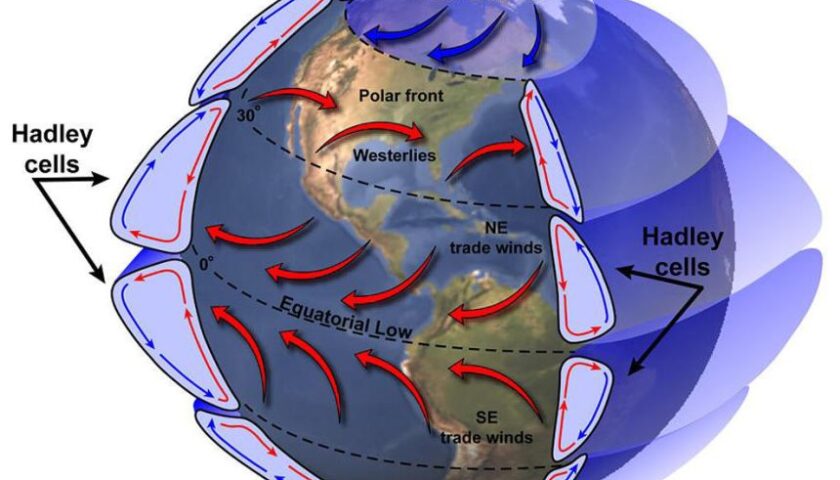Air transport connects the world, bringing people and goods together. But the benefits of aviation also have an environmental downside. Emissions, noise, industrial processes, and waste must be managed by the industry, reduced, and where possible eliminated. Reducing climate change is a serious global challenge. Commercial aviation is responsible for about 2% of global carbon emissions. In 2009 the aviation industry put in place an ambitious and robust carbon emissions strategy, with targets and a four-pillar action plan.
The aviation industry recognizes the need to address the global challenge of climate change and adopted a set of ambitious targets to mitigate CO2 emissions from air transport:
- An average improvement in fuel efficiency of 1.5% per year from 2009 to 2020 was achieved with improvements in technology.
- A cap on net aviation CO2 emissions from 2020 (carbon-neutral growth)
- A reduction in net aviation CO2 emissions of 50% by 2050, relative to 2005 levels
To be part of the solution and in order to achieve the above targets, a strong commitment is required from all stakeholders working together through the four pillars of the aviation industry strategy:
- Improved technology, including the deployment of sustainable low-carbon fuels
- More efficient aircraft operations
- Infrastructure improvements, including modernized air traffic management systems
- A single global market-based measure, to fill the remaining emissions gap
Global Measure for Aviation
In 2016, the 39th ICAO Assembly concluded with the adoption of a global offsetting scheme to address CO2 emissions from international aviation. The agreement at ICAO demonstrated that aviation is determined to live up to its commitments and play its part in meeting international goals for emissions reduction. The scheme established by ICAO is a global offsetting mechanism, called CORSIA (Carbon Offsetting and Reduction Scheme for International Aviation). CORSIA aims to help address any annual increase in total CO2 emissions from international civil aviation above 2020 levels. CORSIA’s obligations have already started. As of 1 January 2019, all carriers are required to report their CO2 emissions on an annual basis. The aviation industry is committed to technology, operational, and infrastructure advances to continue to reduce the sector’s carbon emissions.
Airlines have voluntarily adopted numerous programs to reduce their environmental impacts including tree-planting programs, new electric-powered tugs to reduce fuel consumption by aircraft and ground vehicles while taxiing, aircraft operating procedures which reduce fuel consumption, and many more. According to the International Air Transport Association (IATA), the industry has achieved a 50% reduction in carbon emissions per passenger since 1990, and fuel efficiency has increased by 2.3% each year since 2009.
How carbon offsetting works – When projects that reduce CO₂ emissions are developed, every ton of emissions reduced results in the creation of one carbon offset or carbon credit. A carbon credit is a tradeable certificate that represents the avoidance or removal of one ton of carbon dioxide emissions. Buying carbon credits means investing in emission reduction projects that require carbon offsets financing in order to take place.
Some carbon offsets projects:
- Landfill Gas Capture (LFG): Landfill gas is a natural byproduct of the decomposition of organic material in landfills. Instead of escaping into the air, LFG can be captured, converted, and used as a renewable energy resource. LFG energy projects generate revenue and create jobs in the local community and beyond.
- Solar/Wind: These projects develop expansive solar and wind farms, generating power that otherwise would have been supplied by fossil fuels like coal, diesel and furnace oil. These projects also create jobs and revenues for local communities.
- Forestry: Forest conservation projects prevent deforestation by helping voluntarily forego plans that would have converted forests for other purposes while having additional co-benefits for communities and local wildlife.
- Sustainable Aviation Fuel: Alternative fuels have a significant advantage as they can reduce CO2 emissions and do not require many adjustments in the supply chain and operation. It is recognized that huge investments are needed to increase the volume from 0.2%, currently used in international aviation.
Is there more work to be done to reduce aircraft emissions? Of course. The aviation industry acknowledges this and is working with governments and other stakeholders to map out future strategies and alternative solutions for further reduction of GHG emissions. Let’s see what the airlines are doing the world over.
JetBlue Airlines
On July 1 2020, the airline began offsetting its carbon dioxide emissions (CO2) from jet fuel for all domestic JetBlue-operated flights. JetBlue views carbon offsetting as a bridge to other industry-wide environmental improvements like fuel with lower emissions. Therefore, JetBlue is also investing in sustainable aviation fuel (SAF) and to start, the airline is fueling flights from San Francisco International Airport (SFO) with SAF. JetBlue had already offset more than 2.6 billion pounds of CO2 emissions in partnership with CarbonFund.org Foundation—a leading U.S. based nonprofit carbon reduction and climate solutions organization. JetBlue will offset all emissions from jet fuel for domestic routes and expects to ramp up to offset 15-17 billion pounds (7 to 8 million metric tons) of CO2 emissions each year – the annual equivalent of removing more than 1.5 million passenger vehicles from the road.
JetBlue has started purchasing and flying on sustainable aviation fuel (SAF) from Neste, the world’s third most sustainable company and the largest producer of renewable diesel and SAF made from waste and residue materials, starting in July 2020 for flights from San Francisco International Airport (SFO). Neste’s SAF will contribute to JetBlue’s efforts to reach its climate goals, providing an immediate reduction in greenhouse gas emissions from any aircraft using the fuel.
Delta Airlines
Delta Airlines released a corporate responsibility report on 31 Jul 2020 and remains committed to carbon neutrality during the next decade despite limiting investments today due to the current pandemic. Delta has committed to investing $1 billion toward carbon neutrality on its journey to become the first carbon-neutral airline in the world. The company will achieve this by investing in clean air travel technologies, accelerating the reduction of carbon emissions and waste, and establishing new projects to mitigate the balance of emissions.
Air France-KLM
The airline stated that its environmental strategy remains unchanged despite the crisis, including sustainability commitments, fleet modernisation and optimisation of fuel use to reduce its CO2 emissions per passenger by 50% by 2030 compared to 2005.
Indian Aviation
The first flight using blended aviation fuel took place in 2008. Since then more than 150,000 flights have used biofuels. Only five airports have regular biofuel distribution today (Bergen, Brisbane, Los Angeles, Oslo, and Stockholm), with others offering occasional supply.
The first biofuel flight was operated by SpiceJet airlines on 27 Aug 2018 on Bombardier Q400 on the Dehradun-Delhi route, which carried a blend of air turbine fuel (75%) and biofuel (25%). Bio fule was made from Jatropha crop and developed locally by the Council for Scientific and Industrial Research-Indian Institute of Petroleum.
India imports 82% of its crude oil requirement with net foreign exchange outgo of $ 63 billion. India is the fastest-growing aviation market in the world today and it is our responsibility to grow using clean and sustainable technologies. It is the responsibility of all the stakeholders to increase investment in advanced technology, alternative fuels, and enhanced operational procedures to reduce GHG emissions. The net result would be a safer, efficient, and environmentally sustainable industry.
A journey of thousand miles begins with a single step.
Chinese Proverb
A lot needs to be done and I humbly request airlines to show the way forward. It is time to go Green.
Click here to read my previous article on ” It’s time for airports to go green”.



